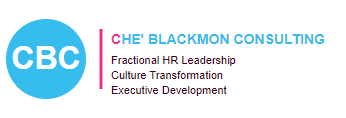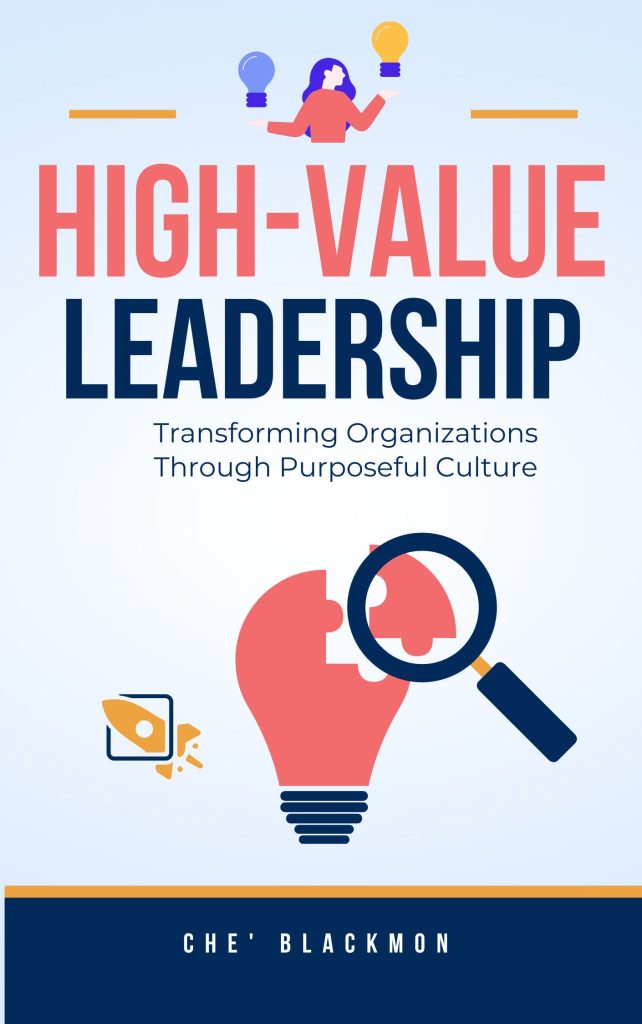Your cart is currently empty!
“The ultimate measure of a man is not where he stands in moments of comfort and convenience, but where he stands at times of challenge and controversy.” – Martin Luther King Jr.
The boardroom was silent. Twenty-three executives stared at me—the only Black woman in the room—waiting for my response to the CFO’s dismissive comment about my “ambitious” restructuring proposal. My pulse quickened. My jaw tightened. Years of similar moments flashed through my mind.
In that split second, I had a choice: React from hurt and history, or respond from wisdom and strategy.
I took a breath, smiled slightly, and said, “I appreciate your perspective. Let me share the data that supports why this isn’t just ambitious—it’s necessary for our survival.”
That moment of emotional regulation didn’t just save the meeting. It secured a $15 million transformation initiative that ultimately saved 300 jobs.
The Hidden Tax of High-Stakes Leadership
In “High-Value Leadership,” I discussed how purposeful culture requires leaders who can maintain clarity under pressure. But here’s what traditional leadership development misses: emotional regulation isn’t equally taxing for everyone.
The Emotional Labor Disparity
Research from the Center for WorkLife Law reveals that Black women in leadership positions engage in 50% more emotional labor than their white male counterparts. We’re simultaneously:
- Managing our authentic emotional responses
- Navigating others’ biases and microaggressions
- Regulating how our emotions are perceived through racial and gender lenses
- Carrying representative pressure for our entire demographic
- Processing generational trauma while projecting “executive presence”
This creates what I call “compound emotional taxation”—the exhausting reality of managing multiple emotional loads while appearing effortlessly composed.
Case Study: Maria, a Black woman VP at a Fortune 500 financial firm, tracked her emotional labor for one month. She discovered she spent 23% of her work time managing others’ reactions to her emotions—time her white male peers used for strategic work. Her revelation: “I’m not just doing my job; I’m constantly managing how my competence is perceived through my emotional expression.”
The Neuroscience of Composure Under Fire
Dr. Lisa Feldman Barrett’s research on emotional construction reveals that our brains predict and create emotions based on past experiences. For Black women leaders, this means our neural pathways are often primed for threat detection—a survival mechanism that can either hinder or enhance our leadership.
The Amygdala Override
When faced with high-stakes situations, our amygdala (threat detection center) can override our prefrontal cortex (executive function). For traditionally overlooked leaders, this response is often heightened due to:
- Historical conditioning: Generations of needed hypervigilance
- Current reality: Ongoing microaggressions and bias
- Future anxiety: Pressure to be perfect to maintain credibility
- Representative burden: Knowing our mistakes reflect on all who look like us
Understanding this neuroscience isn’t about pathologizing our responses—it’s about strategically managing them for maximum impact.
The STEADY Framework for Emotional Regulation
Through two decades of navigating high-stakes leadership moments, I’ve developed a framework that honors both our authentic emotions and strategic objectives:
S – Scan Your Body
Physical awareness precedes emotional control.
Body Scan Technique:
- Notice where tension lives (shoulders, jaw, stomach)
- Identify your physical tell-tales of stress
- Use micro-movements to release (shoulder roll, jaw release)
- Ground yourself through your senses
The Overlooked Advantage: Black women often have heightened somatic awareness from navigating unsafe spaces. Transform this hypervigilance into leadership intelligence.
T – Take Strategic Pause
The pause is your power move.
Strategic Pause Applications:
- Before responding to provocative comments
- When receiving surprising information
- During heated negotiations
- After microaggressions
As I detailed in “Rise & Thrive,” the pause isn’t weakness—it’s wisdom. It disrupts others’ expectations and creates space for strategic response rather than reactive emotion.
E – Examine the Context
Emotional intelligence includes situational analysis.
Context Questions:
- What’s really at stake here?
- Who benefits from my emotional reaction?
- What response serves my long-term goals?
- How can I maintain authenticity while being strategic?
Real-World Example: When a Black woman CEO was publicly challenged by a board member known for testing leaders, she quickly examined context: This was about power, not performance. Her composed response—acknowledging his concern while redirecting to data—earned board respect and neutralized future challenges.
A – Activate Your Best Response
Choose responses that align with your objectives.
Response Options Toolkit:
- The Redirect: “That’s an interesting perspective. Let’s look at the data…”
- The Clarification: “Help me understand what you mean by…”
- The Reframe: “Another way to look at this is…”
- The Strategic Agreement: “You raise a valid concern. Here’s how we address it…”
D – Deploy Cultural Intelligence
Use emotional regulation as a strategic tool.
Cultural Intelligence in Action:
- Read the room’s emotional temperature
- Adjust your approach without sacrificing authenticity
- Use code-switching as a power move, not survival
- Build bridges while maintaining boundaries
Y – Yield Strategic Outcomes
Transform emotional moments into leadership wins.
Outcome Strategies:
- Convert challenges into innovation opportunities
- Use composed responses to build credibility
- Transform conflict into collaboration
- Build reputation as unflappable leader

The Double-Bind of Emotional Expression
In “Mastering a High-Value Company Culture,” I explored how authentic leadership drives organizational success. But for Black women, emotional authenticity faces unique constraints:
The Perception Trap
Research from Harvard Business Review shows:
- Expressing anger: Labeled as “aggressive” or “angry Black woman”
- Showing frustration: Seen as “not leadership material”
- Displaying joy: Perceived as “not serious enough”
- Maintaining calm: Tagged as “cold” or “intimidating”
This creates an impossible emotional tightrope. The solution? Strategic emotional regulation that maintains your authentic core while navigating biased perceptions.
The Authenticity Strategy
Balance authenticity with strategic expression:
- Private Processing: Create safe spaces for full emotional expression
- Strategic Selection: Choose when and how to display emotions
- Trusted Allies: Build networks for authentic emotional support
- Professional Boundaries: Separate emotional labor from emotional truth
Current Trends in Emotional Intelligence Leadership
Dave Ulrich’s recent work on human capability emphasizes that emotional regulation is becoming a core leadership competency. Modern trends include:
1. From Individual to Collective Emotional Intelligence
Organizations now recognize that emotional regulation isn’t just personal—it’s cultural. Leaders must manage both their emotions and organizational emotional climate.
2. From Suppression to Strategic Expression
The old model of “leave emotions at the door” is dead. Today’s leaders strategically deploy emotions for:
- Building connections
- Driving change
- Inspiring action
- Creating psychological safety
3. From Universal to Contextual Application
Recognition that emotional regulation looks different based on:
- Cultural background
- Industry norms
- Organizational culture
- Individual identity
4. From Soft Skill to Strategic Competency
Emotional regulation now directly links to business outcomes:
- Decision quality
- Team performance
- Innovation capacity
- Customer satisfaction
The High-Stakes Playbook: Your 30-Day Emotional Mastery Plan
Week 1: Awareness Building
Days 1-3: Baseline Assessment
- Track emotional triggers in high-stakes situations
- Note physical responses to stress
- Identify patterns in challenging interactions
- Document current coping mechanisms
Days 4-7: Response Mapping
- Analyze what triggers strongest reactions
- Map emotions to specific stakeholders
- Identify energy drains
- Note successful regulation moments
Week 2: Skill Development
Days 8-10: Physical Regulation
- Practice box breathing (4-4-4-4 count)
- Implement body scan techniques
- Create physical anchor movements
- Develop pre-meeting centering rituals
Days 11-14: Cognitive Reframing
- Challenge automatic thoughts
- Practice perspective-taking
- Develop response scripts
- Create mental models for difficult situations
Week 3: Strategic Application
Days 15-21: Real-World Practice
- Apply STEADY framework in low-stakes situations
- Graduate to medium-stakes applications
- Document what works
- Refine approaches based on outcomes
Week 4: Integration and Elevation
Days 22-28: Advanced Strategies
- Practice in high-stakes environments
- Develop signature regulation techniques
- Build support systems
- Create sustainable practices
Days 29-30: Future Planning
- Assess progress
- Identify ongoing development needs
- Create accountability systems
- Plan continued growth
The Neuroscience Toolkit for Black Women Leaders
Specific strategies for managing our unique emotional landscape:
1. The Ancestral Wisdom Practice
Channel generational strength:
- Connect to ancestors who navigated harder circumstances
- Draw on cultural resilience practices
- Use spiritual or meditative traditions
- Transform historical pain into present power
2. The Code-Switch Console
Make code-switching conscious:
- Identify your different “modes”
- Practice smooth transitions
- Maintain core self across modes
- Use switching as strategic tool, not survival mechanism
3. The Microaggression Circuit Breaker
Rapid response to daily cuts:
- Develop pattern interruption techniques
- Create mental shields
- Practice prepared responses
- Build recovery rituals
4. The Excellence Shield
Protection from perfectionism:
- Define “good enough” for different contexts
- Release representative pressure
- Celebrate strategic wins over perfect execution
- Build self-compassion practices
Measuring Emotional Regulation Success
Move beyond “keeping it together” to strategic metrics:
Personal Indicators:
- Energy levels after difficult interactions
- Recovery time from challenging situations
- Physical health markers (sleep, tension, digestion)
- Relationship quality with key stakeholders
Professional Outcomes:
- Influence in high-stakes decisions
- Reputation for grace under pressure
- Career advancement pace
- Team psychological safety scores
Strategic Impact:
- Innovation during conflict
- Collaboration across differences
- Crisis leadership effectiveness
- Organizational culture influence
Building Your Emotional Regulation Portfolio
Document your growth journey:
- Trigger Inventory: What consistently challenges your composure?
- Regulation Toolkit: Which techniques work best for you?
- Success Stories: When has regulation led to wins?
- Growth Edges: Where do you still struggle?
- Support Systems: Who helps you maintain balance?
- Future Vision: What mastery looks like for you
Discussion Questions for Leadership Development
- How does the emotional labor tax impact your leadership capacity, and what would change if that burden was lifted?
- Which aspects of the STEADY framework would most transform your high-stakes leadership moments?
- How might organizations better support the emotional regulation needs of traditionally overlooked leaders?
- What would shift if emotional intelligence was valued equally with technical expertise in your organization?
- How can we transform the additional emotional labor Black women carry into recognized leadership competency?
Your Next Steps to Emotional Mastery
- Assess your current emotional regulation patterns using the awareness exercises
- Identify your top three high-stakes triggers
- Practice one STEADY technique this week
- Document the impact on your leadership effectiveness
- Build support systems for sustainable practice
Ready to Master Composure Under Fire?
Emotional regulation in high-stakes leadership isn’t about suppressing your humanity—it’s about strategically channeling your full self for maximum impact. For Black women and traditionally overlooked leaders, this mastery is both more challenging and more crucial.
Che’ Blackmon Consulting specializes in helping leaders develop sophisticated emotional regulation strategies that honor both authenticity and strategic necessity. We understand the unique challenges faced by traditionally overlooked leaders and provide culturally intelligent solutions.
Our Emotional Intelligence Services Include:
- Executive Emotional Intelligence Assessment
- High-Stakes Leadership Simulation Training
- Neuroscience-Based Regulation Strategies
- Cultural Intelligence Development
- Peer Support Circle Facilitation
Specialized Programs:
- Composure Under Fire Intensive: 30-day transformation program
- The STEADY Leadership Workshop: Practical application training
- Emotional Labor to Leadership Power: For traditionally overlooked leaders
- Neuro-Leadership Coaching: One-on-one executive development
Schedule a consultation to explore how we can help you transform emotional challenges into leadership advantages.
Remember: Your composure under fire isn’t about being emotionless—it’s about being strategically emotional. Master this, and you don’t just survive high-stakes leadership—you redefine it.
Che’ Blackmon is the CEO of Che’ Blackmon Consulting and author of “Mastering a High-Value Company Culture,” “High-Value Leadership: Transforming Organizations Through Purposeful Culture,” and “Rise & Thrive: A Black Woman’s Blueprint for Leadership Excellence.” With over 20 years of experience navigating high-stakes leadership moments, she specializes in helping leaders—particularly traditionally overlooked talent—develop sophisticated emotional intelligence for strategic impact.
#EmotionalIntelligence #LeadershipDevelopment #BlackWomenInLeadership #ExecutivePresence #HighStakesLeadership #WorkplaceWellbeing #DiversityInLeadership #EmotionalRegulation #WomenInBusiness #LeadershipSkills #CorporateCulture #ExecutiveCoaching #ProfessionalDevelopment #InclusiveLeadership #LeadershipMindset


